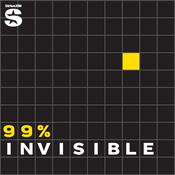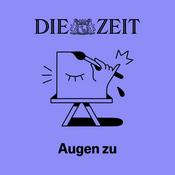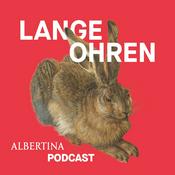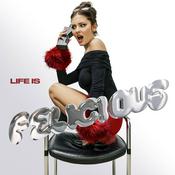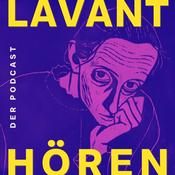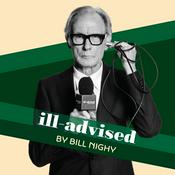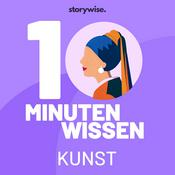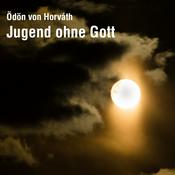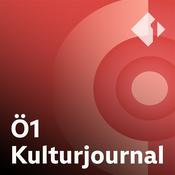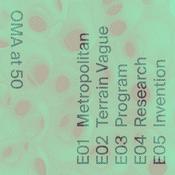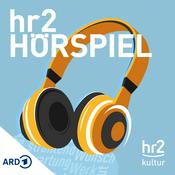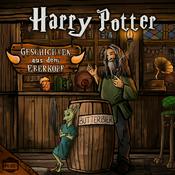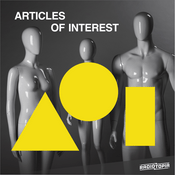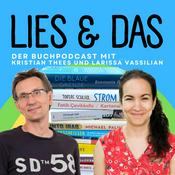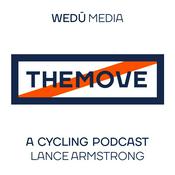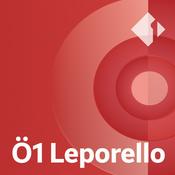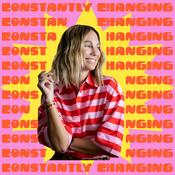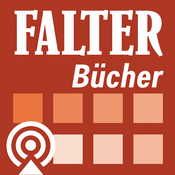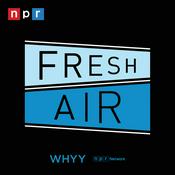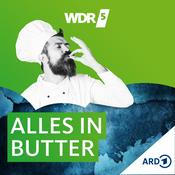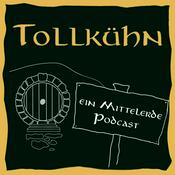Verfügbare Folgen
5 von 144
- Medieval Friendship Test & Other Tales: Gesta RomanorumThis week, we adapt three more medieval "morality" tales from the Gesta Romanorum, adapting them into unique puzzles, adventures, and scenarios for your tabletop campaign. Would YOUR party help you hide a body? Join our discord community! Support us on patreon! Get your copy of Marginal Worlds, a deck of 50 magic items pulled directly from medieval manuscripts, built for any TTRPG system he¡re! Socials: Tumblr Website Bluesky Instagram Facebook Citations & References: Swan, Charles, translator. Gesta Romanorum: or, Entertaining Moral Stories. Edited by Wynnard Hooper, Dover Publications, 1959. N.B.: the “woman from Tumblr” briefly & obscurely referred to in the end segment is rabies educator @raccoonmilf, if anyone was wondering.--------1:14:26
- A Tale of Two Tellings: Eric & Enide Pt 2While we may think of genre trends as a modern thing in fantasy literature, the chivalric romance of Eric & Enide paints another picture. We examine two versions of this tale: one gritty and grim dark, and the other an idealistic romantasy, and examine how we can use these story techniques in our own campaigns to tell the type of story we want to tell. Join our discord community! Support us on patreon! Get your copy of Marginal Worlds, a deck of 50 magic items pulled directly from medieval manuscripts, built for any TTRPG system here! Socials: Tumblr Website Bluesky Instagram Facebook CITATIONS & REFERENCES: Davies, Sioned, translator. The Mabinogion. Oxford UP, 2007. Oxford World’s Classics. Gantz, Jeffrey, translator. The Mabinogion. Dorset Press, 1976. Guest, Charlotte, translator. The Mabinogion. 1877. J. M. Dent & Sons, 1906. Everyman’s Library. Thomson, Robert L., editor. Ystorya Gereint uab Erbin. Dublin Institute for Advanced Studies, School of Celtic Studies / Dundalgan Press, 1997. Medieval and Modern Welsh Series 10. “RIB 306. Curse upon Senicianus.” Roman Inscriptions of Britain, https://romaninscriptionsofbritain.org/inscriptions/306. Accessed 9 November 2025. Tolkien, J. R. R. “The Name ‘Nodens’.” Report on the Excavation of the Prehistoric, Roman, and post-Roman Site in Lydney Park, Gloucestershire, by R. E. M. Wheeler and T. V. Wheeler, Society of Antiquaries of London / Oxford UP, 1932, pp. 132-7. Reports of the Research Committee of the Society of Antiquaries of London 9.--------1:14:48
- Halloween Special: Demonic Accounts, the Law of the CircleHappy Halloween! The demon has become a fantastic villain (or patron) in many TTRPGs, but their legalistic nature can sometimes feel overused. Join us this week as we analyze real accounts of medieval demons, how they behave, and how to get rid of them so that you can spice up your TTRPG this Halloween. MOONSHOT NETWORK CHARITY STREAM: Streaming November 8-9 Watch the stream here: http://twitch.tv/moonshotnetwork Donate here: http://moonshotpods.com/donate Join our discord community! Check out our Tumblr for even more! Support us on patreon! Get your copy of Marginal Worlds, a deck of 50 magic items pulled directly from medieval manuscripts, built for any TTRPG system here! Socials: Tumblr Website Bluesky Instagram Facebook Citations & References: Caesarius of Heisterbach. The Dialogue on Miracles. Translated by H. von E. Scott and C. C. Swinton Bland, Harcourt, Brace and Company, 1929. 2 vols. Broadway Medieval Library. Kuang, R. F. Katabasis. Harper Voyager, 2025. “A Rugrats Passover.” Rugrats. Nickelodeon, 13 April 1995. String music by szegvari, downloaded from freesound.org.--------1:37:16
- A Court of Bleeding and Boiling: Medieval & Modern Courtly RomanceIn this episode, we finish off the Lais of Marie de France and ask - what makes a medieval romance, and how can we apply that to our games and stories in fresh ways? How does medieval romance compare to modern fantasy romance? Join our discord community! Check out our Tumblr for even more! Support us on patreon! Get your copy of Marginal Worlds, a deck of 50 magic items pulled directly from medieval manuscripts, built for any TTRPG system here! Socials: Tumblr Website Bluesky Instagram Facebook Citations & References: Marie de France. French Medieval Romances. Trans. Eugene Mason. 1911. Project Giutenburg. Read here. Second translation by S.A. Kline, Poetry in Translation. Read here. Gautier, Léon (1891) [1884]. "The Code of Chivalry". Chivalry. Translated by Frith, Henry. Routledge. Damon, S. Foster. “Marie de France: Psychologist of Courtly Love.” PMLA, vol. 44, no. 4, 1929, pp. 968–96. JSTOR, https://doi.org/10.2307/457705. Accessed 21 Sept. 2025. Lewis, C.S. Allegory of Love. Oxford University Press, 1958. Link. Moore, John C. “‘Courtly Love’: A Problem of Terminology.” Journal of the History of Ideas, vol. 40, no. 4, 1979, pp. 621–32. Link.--------2:02:38
- Danse Macabre: Adapting the Medieval Mediterranean with Stillfleet StudioIn this episode, we're joined by Chris and Wythe, the creators of Danse Macabre, to discuss their medieval horror TTRPG and how to create historical settings that feel both real and reasonable to a modern gamer. We discuss the concept of the "novum" in worldbuilding, medievalism, and why TTRPGs feel so set upon the Medieval Fantasy in this fantastic roundtable. Support the Danse Macabre Kickstarter here! Join our discord community! Check out our Tumblr for even more! Support us on patreon! Get your copy of Marginal Worlds, a deck of 50 magic items pulled directly from medieval manuscripts, built for any TTRPG system here! Socials: Tumblr Website Bluesky Instagram Facebook Citations & References: Support the Danse Macabre Kickstarter here Play Danse Macabre: Prima Mors (the quickstart guide) - on Stillfleet, Itch, and DTRPG Find Chris at his website or @timespace.place on socials Find Wythe at Stillfleet.com or @stillfleet on socials Listen to Why We Roll on any podcast platform Tuchman, Barbara W. A Distant Mirror: The Calamitous 14th Century. Ballantine Books, 1978. Buehlman, Christopher. Between Two Fires. Ace Books, 2012.--------1:36:40
Weitere Kunst Podcasts
Trending Kunst Podcasts
Über The Maniculum Podcast
Maniculum: little hand, pointing finger; often found in manuscript marginalia.
Hi! We’re Mac and Zoe, a professional medievalist and triple AAA game developer, and together, we use modern game design techniques to uncover the origins of your favorite tropes and adventures from medieval manuscripts.
In each episode, we explore a new medieval manuscript, its connections to modern TTRPGs, and teach you how to adapt these tales into compelling campaigns and amazing adventures. Whether you’re looking to recreate the noble Arthurian tales or incorporate weird and wacky medieval monsters into your campaign, the Maniculum Podcast has you covered.
Podcast-WebsiteHöre The Maniculum Podcast, 99% Invisible und viele andere Podcasts aus aller Welt mit der radio.at-App

Hol dir die kostenlose radio.at App
- Sender und Podcasts favorisieren
- Streamen via Wifi oder Bluetooth
- Unterstützt Carplay & Android Auto
- viele weitere App Funktionen
Hol dir die kostenlose radio.at App
- Sender und Podcasts favorisieren
- Streamen via Wifi oder Bluetooth
- Unterstützt Carplay & Android Auto
- viele weitere App Funktionen


The Maniculum Podcast
Code scannen,
App laden,
loshören.
App laden,
loshören.
